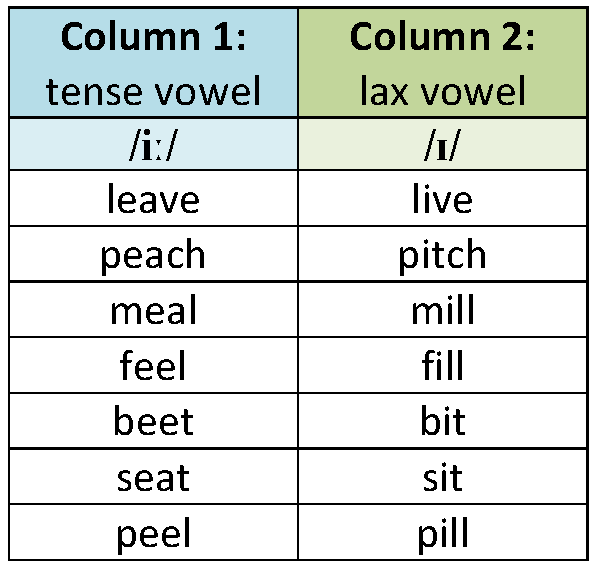ADVERTISEMENT
October 2012
Oh, the joys of helping students with the strange English phonemes. It’s safe to say, English is peppered with confusing pronunciation. I’m sure we have all come across those moments of, “Excuse me. What was that? Could you say that again?” These types of questions not only come from the teachers…they also come from students not understanding their teachers!
From consonants like /raɪs/ and /laɪs/, to vowels such as /bɛd/ and /bæd/, not to forget the dreaded /tri:/ and /θri:/, students are tasked with sorting out all kinds of complicated sounds and articulations. The activities below are designed to help students see the potential problems. Maybe, if we can see where mouths, teeth, and tongue are getting tangled, we can fix it. So, warm up your articulators! (You can download the full International Phonetic Alphabet chart from the International Phonetic Association.)
Mirror Mirror
Materials: small hand-held mirrors, one for each student
Often, as teachers, we resort to hearing when it comes to helping students pronounce different phonemes. When, sometimes, it helps to simply look at the structure of the mouth, teeth, and tongue. This simple exercise might help students see the physical differences between certain sounds.
Make sure each student has his or her own mirror. The teacher needs to model different phoneme physical structure. It is important to be overly obvious. Here are some samples of what pairs you can model:
If you are having trouble remembering these sounds, you may find samples here.
Students should use their mirrors to look at the placement of their mouths, teeth, and tongues. It’s nice to let them practice while facing a wall. That way, they won’t be embarrassed about staring at their mouths or self-conscious about forming the sounds.
Paper Puff
Materials: small strips of notebook paper, 1 inch wide and 3 inches long
Students should be given a list of words (see below for some samples). Many students struggle finding the difference with /p/ & /b/, /t/ & /d/, and /k/ & /g/. This activity is designed to help students understand the difference in the amount of air needed to produce these sounds.
Using their index finger, students will hold one end of the paper to their chins while the other end of the paper is situated in front of their mouths. Students should say the words from the lists below while documenting the movement of the paper. They should notice that the words with /p/, /t/, and /k/ move the paper much further then the words that start with /b/, /d/, and /g/.
Vibrations
Materials: students’ hands
Similar to the activity above, give students a list of words (see samples below). Students should place their hand on their throats and say the words from the lists. As they say the words, hopefully they start to notice a difference in their vocal cords…

Tricky Vowels
Materials: Rubber bands (enough for each student)
With long vowels, mouths tend to be tight; whereas with short vowels, our mouths are more relaxed. This exercise could be done with the mirrors, or you could try something different.
When enunciating a word with a long vowel, have students stretch the rubber band to its longest length (mimicking a mouth) using their fingers. When enunciating a word with a short vowel, the rubber band doesn’t need the same tightness. It should stay relaxed. Try this with the list of words below.

Number Cards
Materials:
Pair students up so that one person has the set of three cards and the other has the word list. The student with the list should clearly read the words from the list below, making sure his or her partner does not see the list. The student with the cards should hold up the number card of the word that is different. So, if the student who is reading says “boot, book, boot” the listening student should hold up the card with the number 2 on it to indicate which word was not the same.
|
1. BOOT |
BOOK |
BOOT |
If they are able, students can be allowed to make up word pairs of their own.
Please use these links to learn more about the International Phonemic Alphabet. Also, if you are looking for copious lists of minimal pairs, look no further. And, don’t forget the joy of tongue twisters!
____________________________
Sarah Sahr works at TESOL and is currently pursuing her doctorate in education administration and policy at George Washington University. Her professional career has taken her all over the world, most notably as a Peace Corps Volunteer in Ethiopia and as a traveling school teacher/administrator with Ringling Bros. and Barnum & Bailey circus. Sarah is also a certified ashtanga yoga instructor and has managed an eco-lodge in Chugchilan, Ecuador.
|
"What'd You Say?": Pronunciation Activities" by Sarah Sahr for TESOL International Association is licensed under a Creative Commons Attribution-NonCommercial-ShareA like 3.0 Unported License. |
| Next Article |
Assistant Director, University of Colorado Denver, ESL Academy, Denver, Colorado, USA
Assistant Director, American Language Institute, University of Toledo, Toledo, Ohio, USA
Director of Studies, Australian Centre for Education, Cambodia
ESL Specialist, American Language Institute, Toledo, Ohio, USA
Want to post your open positions to Job Link? Click here.
To browse all of TESOL's job postings, check out the TESOL Career Center.
Registration now open!
Join TESOL
in Dallas, Texas, USA
20–23 March 2013
Get a year of
professional development
in just 4 days!
Read about the Keynote Speakers
Get info on K–12 Dream Day
Learn about the Doctoral and Grad Student Forums
And more!